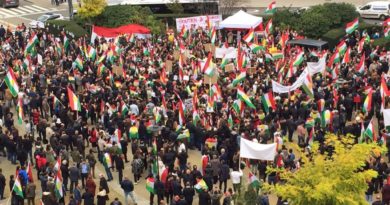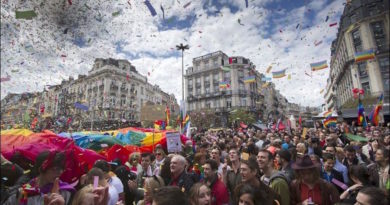Can you name that flower?
“Earth laughs in flowers” once wrote American poet Ralph Waldo Emerson. We can’t say for sure that Brussels is the laughing type of city, but the earth beneath it is definitely aglow with the blossoms of spring.
It’s impossible to miss those lovely, enchanting flowers on your way to work or going back home. In a city that can be gray, anything that sprouts colours will certainly grab attention like a newsflash. You may even stop for a while to marvel at these petalled beauties. But do you know what they are called?
A thing of joy and wonder deserves to be identified instead of merely being called “that yellow bulb with an orange snout” or “those little blue things.” So let’s get to know some of the flowers that usually greet us in and around the city during this season.
1. Tulips (Tulipa gesneriana)
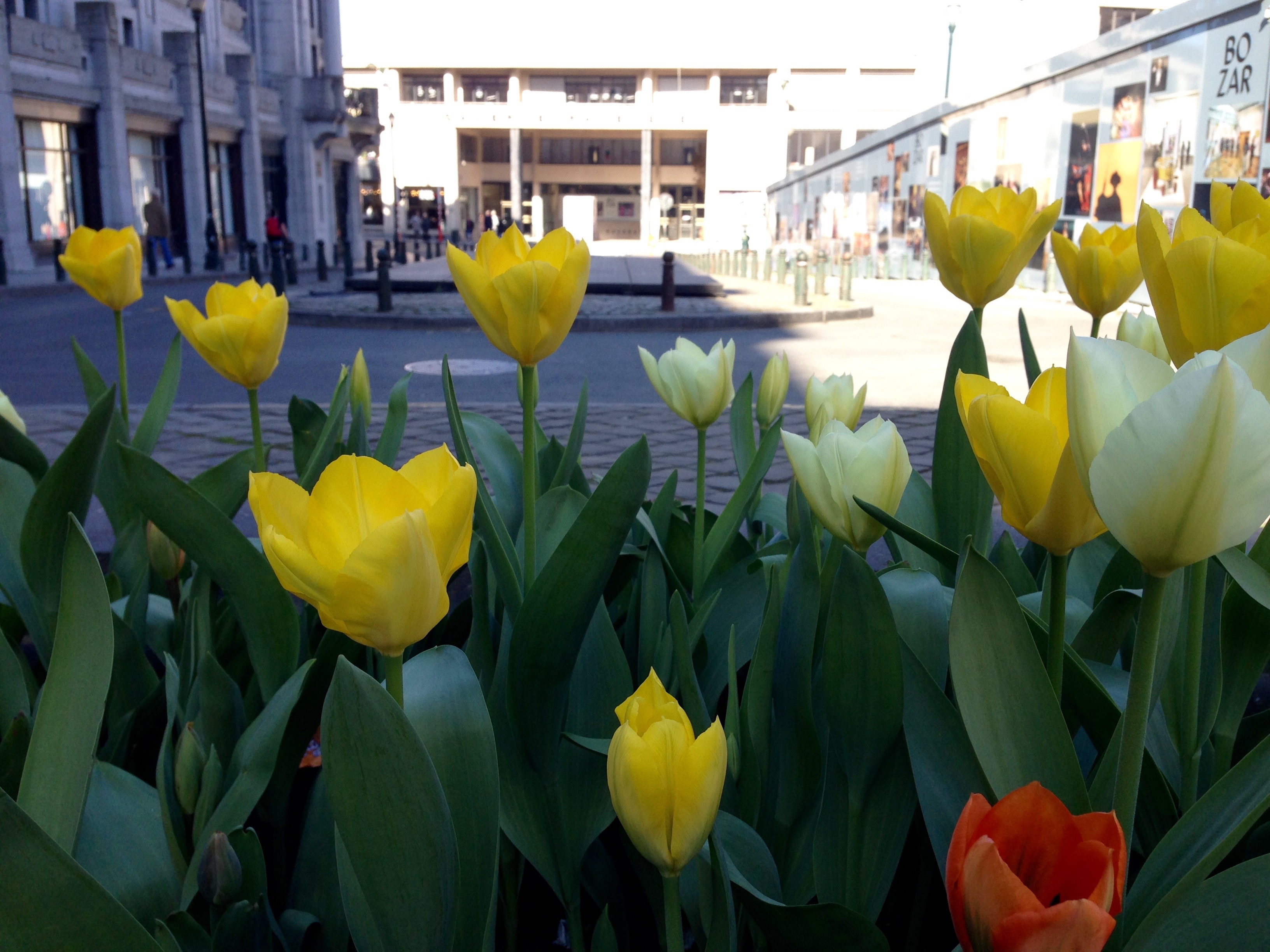
You know this one for sure. If you don’t, where have you been all your life? Tulips are the most familiar and most common flowers you’ll see in Brussels and most European cities in springtime. The tricky thing about them is that they’re easily recognised when their petals are closed or erect. But once those petals start spreading wide open, the tulip ceases to look like the regular tulip we know. Don’t get confused. They’re still tulips, only less dignified looking than usual.
Tulips are known to symbolise love so rejoice if you receive them from somebody special. They’re also edible so if we ever catch you in the park stealing a bite off a tulip, we won’t judge you.
2. Narcissus, daffodils, or jonquils? (Narcissus poeticus)

First, let’s clarify this mess. Narcissus is the general name of a plant family that includes daffodils and jonquils. In other words, Narcissus is the name of the club and the two others are its VIP members. What makes daffodils and jonquils special compared to other club members is their trumpet-shaped center. So if a flower looks like it’s about to pull a Miles Davis on you, it’s definitely a daffodil or a jonquil. The major difference between the two is that jonquils usually go in clusters per stem, while daffodils prefer to play it solo like the narcissist flowers that they are.
Flowers belonging to the Narcissus group are typically dressed in white or yellow representing new life and hope. A word of warning though. Daffodils are not to be mixed with other flowers in a vase. The toxic sap from their stem can harm others trying to share the space and the limelight. The Narcissus brand has a reputation to uphold after all.
3. Pansies (Viola tricolor)
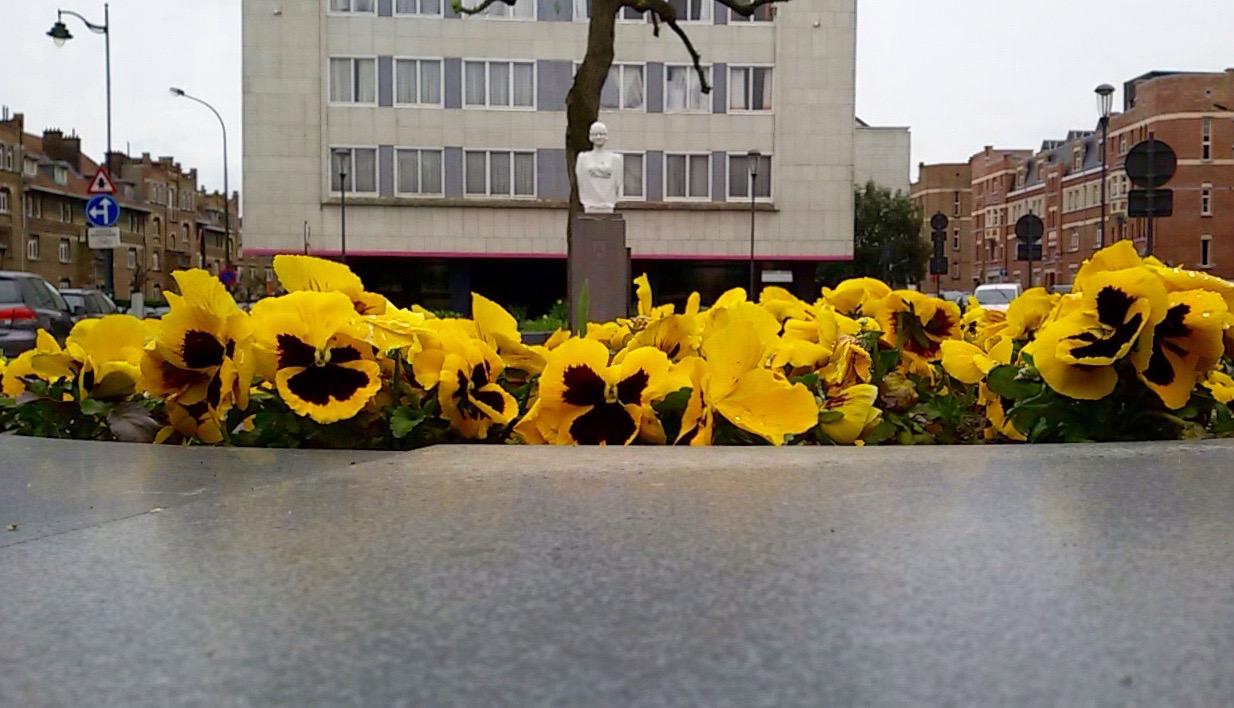
Pansies come in a variety of colours, but they have a distinctly dark center that looks like a face. You know it’s a pansy when you stare at it and you feel like it’s staring right back at you and saying, “tu veux ma photo?”
Pansies signify either freedom of thought or the thoughts of lovers. The very name itself is derived from the French word, pensée or thought. Like tulips, pansies are also edible and can be used for making syrup or garnishing salads.
4. Poppies (Papaveraceae)

A poppy resembles a pansy but instead of a central face, you’ll find a swirl of yellows, blacks, or violets popping out of its core. It’s not called a poppy for nothing. This flower breed stands for peace, sleep, or death and is commonly offered in memory of those who died in war.
What you’re probably curious about is whether you’ll get a high out of sniffing up a poppy since it has links to opium. Don’t count on it. Only a specific breed of poppies can produce opium and it will take Breaking Bad chemical abilities to make that happen.
5. Forsythia (Forsythia suspensa)

The forsythia is a shrub bursting with bright yellow blooms. You’ll probably bump into these flowers in almost every block of the neighbourhood to a point where you’ll wonder if they’re stalking you.
This plant was named after William Forsyth, not the Hollywood actor but the Scottish botanist and founding member of the Royal Horticultural Society. In flower language, the forsythia expresses anticipation. Explains why you can anticipate running into them or them running into you several times within a day.
6. Primrose (Primula Vulgaris)
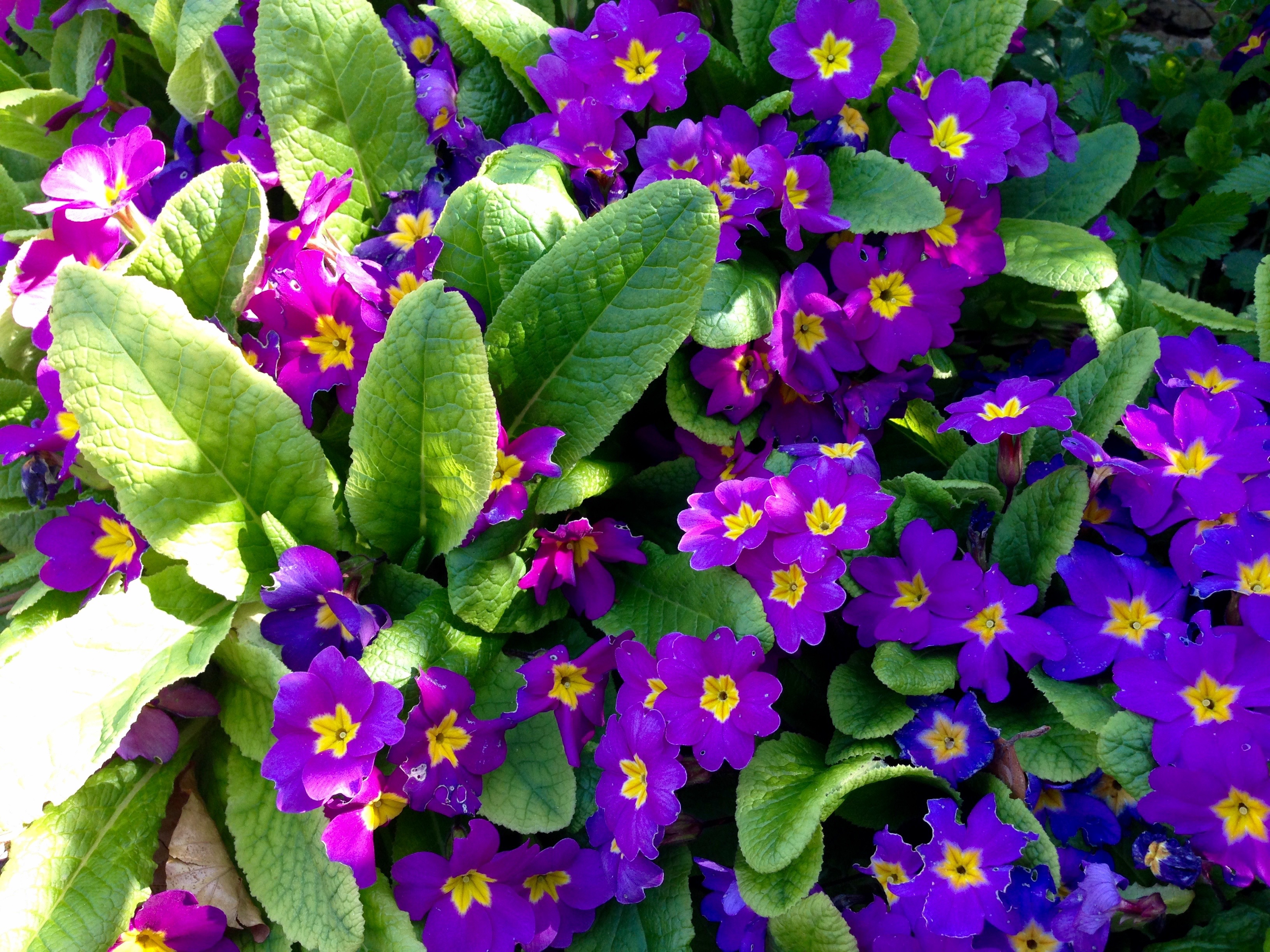
The primrose is among the early bloomers in spring as denoted by its name which comes from prima rosa in Latin or first rose. This variety of pink, purple, red, white, or yellow flowers symbolises youth or youthful energy which is quite fitting for a flower that can grow and spread vigorously. If you’re thinking of growing your own flower garden, planting primroses is a good way to start. These flowers practically behave like weeds and will most likely be all over the place in no time.
7. Forget-me-not (Myosotis)
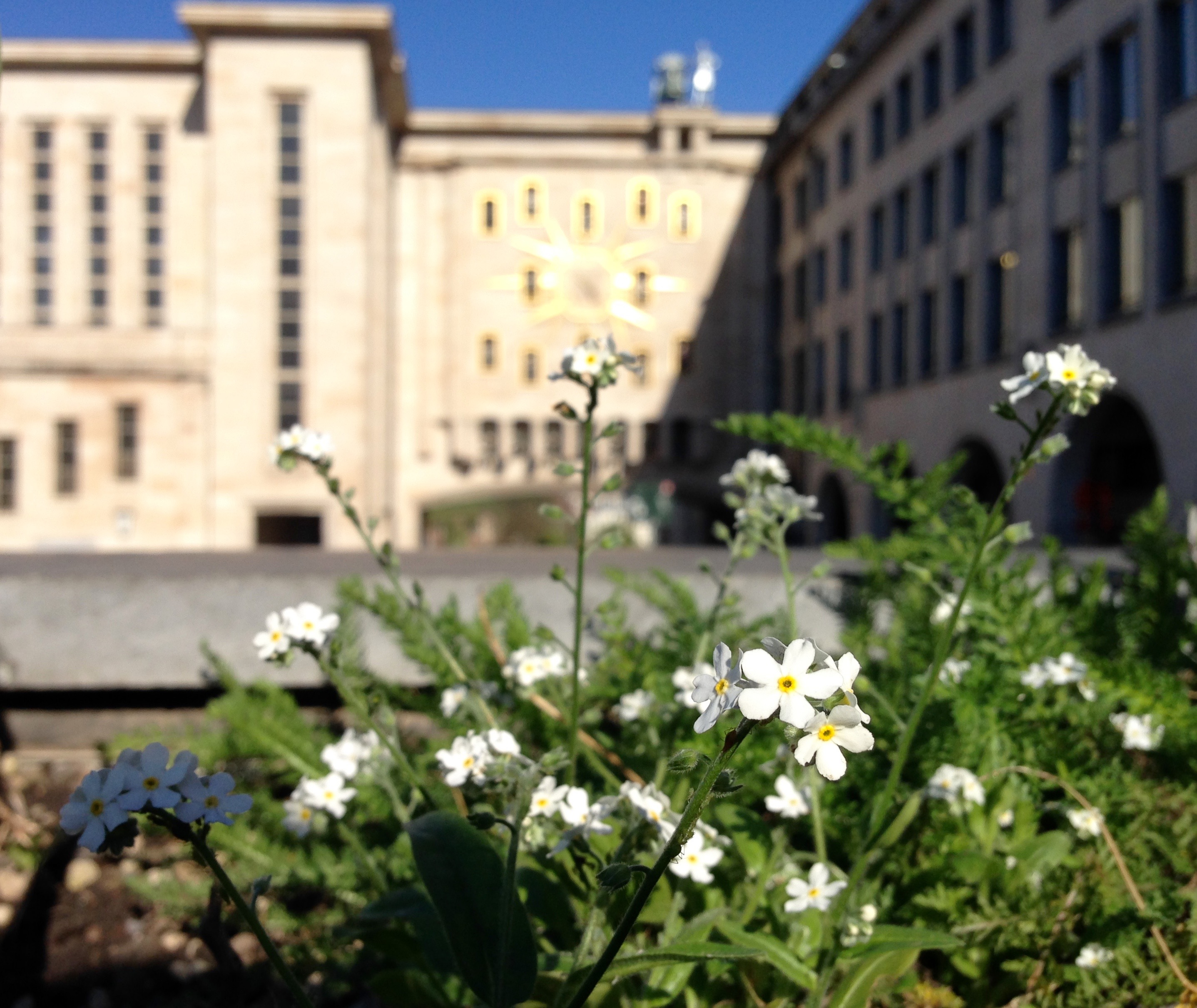
If you see a cute, little flower that is either blue, pink, or white, has five petals and a yellow nucleus, you are looking at a forget-me-not and don’t you forget it. Its scientific name, Myosotis is Greek for mouse’s ear which resembles the shape of the flower’s leaves and petals. Forget-me-nots speak of true love and fidelity and that is definitely worth remembering.
8. Dandelions (Taraxacum)
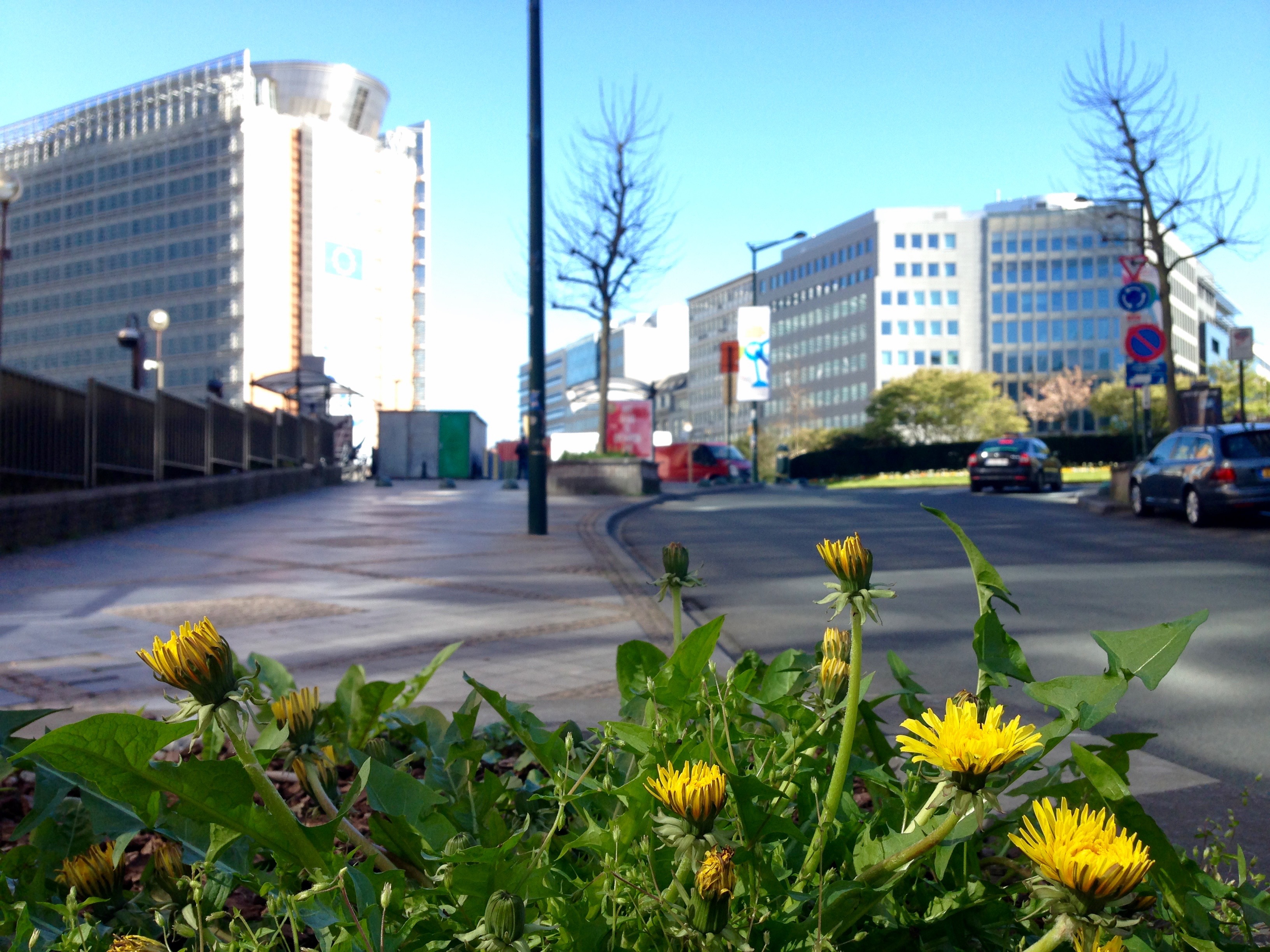
Special mention has to be given to dandelions which are hands down the most visible and pervasive flowers in Brussels. These yellow or white sprouters are weeds which is basically a code name for a group of plants that will show up anywhere and everywhere whether you like it or not. Among weeds, dandelions are the eternal gatecrashers and winners of the “no sense of space and boundary” award. The scientific name is foreboding enough.
But let’s admit it. These overbearing flowers have a way of cheering us up with their charm. And despite their bad reputation, we have much to learn from these masters of survival which symbolise long-lasting joy, wisdom, and healing.
Did we miss any flower you’ve seen around Brussels? Send us a photo and we’ll do our best to find out its name and its story.


